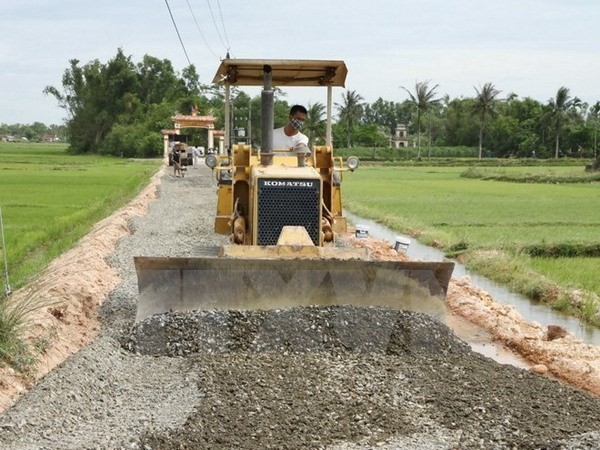
The ratio is expected to rise to at least 40 percent as of the end of this year, up 3.37 percent from 2017.
Fifty-three districts of 27 provinces and central-run city earned the recognition, up 10 localities from the previous year.
Thanks to the local efforts to improve rural infrastructure, 4,944 communes have met criteria on transportation, 7,653 satisfied criteria on irrigational system, and 5,063 communes fulfilled the criteria on schooling facilities.
As many as 818 agricultural value chains to promote local staples have been developed in the localities, with high-technology applied extensively. Notably, specialised areas have been formed for the cultivation of high-value crops such as mango, green-skin pomelo and durian in Dong Nai province, mango in Dong Thap province, dragon fruit in Binh Thuan province, Luc Ngan litchi in Bac Giang province, and Cao Phong orange in Hoa Binh.
The country has registered around 4,823 local specialties or “one commune one product” (OCOP) products and tourism services. However, only 1,086 of them have registered or announced their quality standards and 695 products have gained intellectual property protection.
The move will help promote the efficiency of the OCOP programme during 2018-2020, making contributions to developing rural economy, increasing income for the locals while preserving traditions in each region.
At the same time, the central office has warned about a yawning gap in the new-style rural building results among regions. The Red River Delta and the southeast region achieved 65.38 percent and 63.88 percent of the set target while the ratio in the northern mountain, Central Highland, Mekong Delta and coastal south central regions were 18.2 percent, 24.67 percent, 31.21 percent and 36.12 percent, respectively.
In order to earn the title of new style rural areas, a commune or district must meet 20 criteria covering a wide range of fields, from the development of infrastructure, the improvement of production capacity, environmental protection to the promotion of cultural values.
The national target programme on building new-styled rural areas was initiated by the Vietnamese Government in 2010 with the aim of developing rural regions. It initially had 19 criteria, and the set of criteria was increased to 20 in 2015.
























